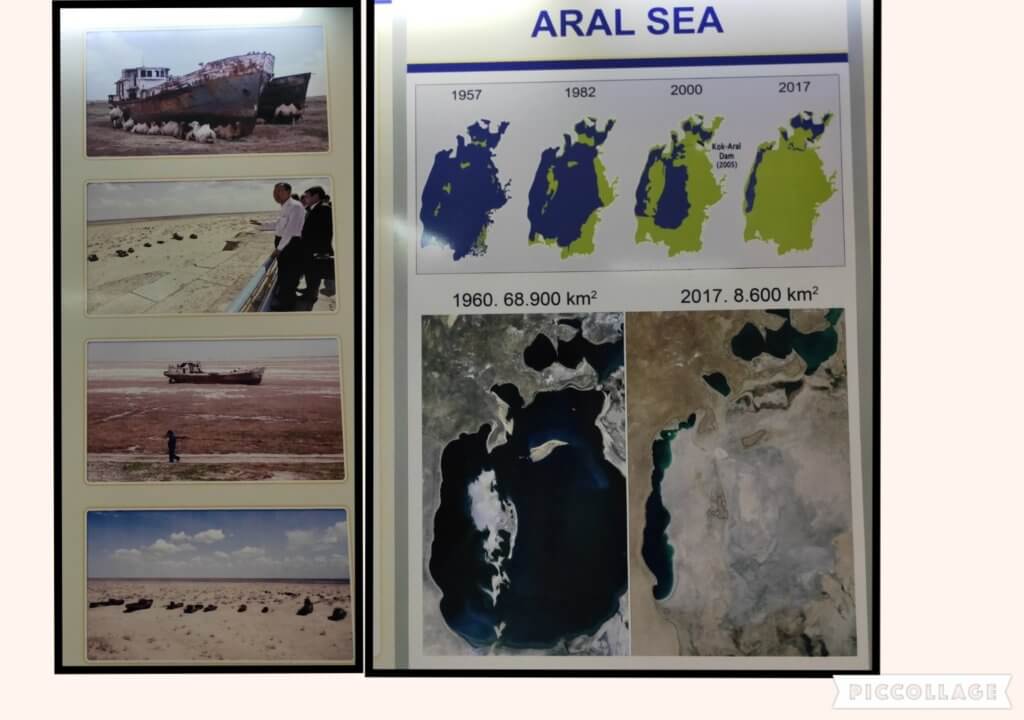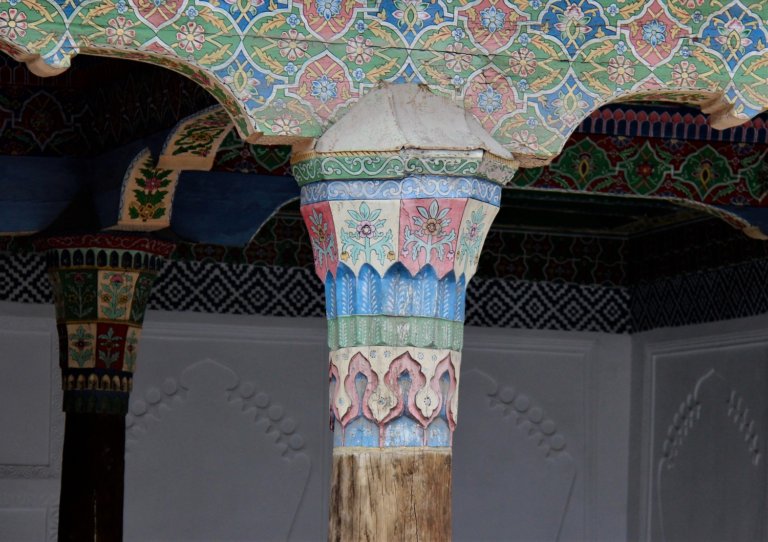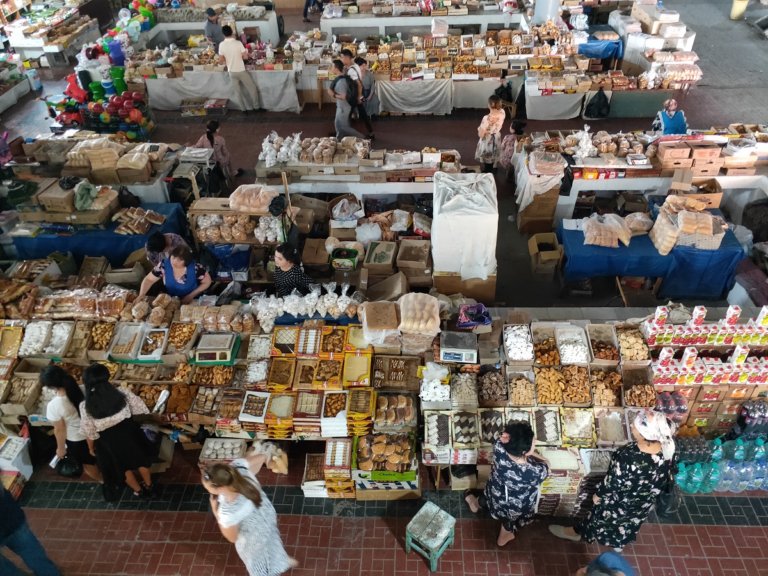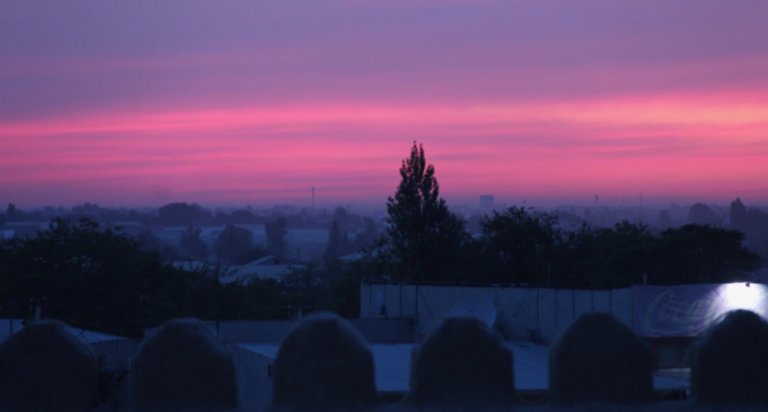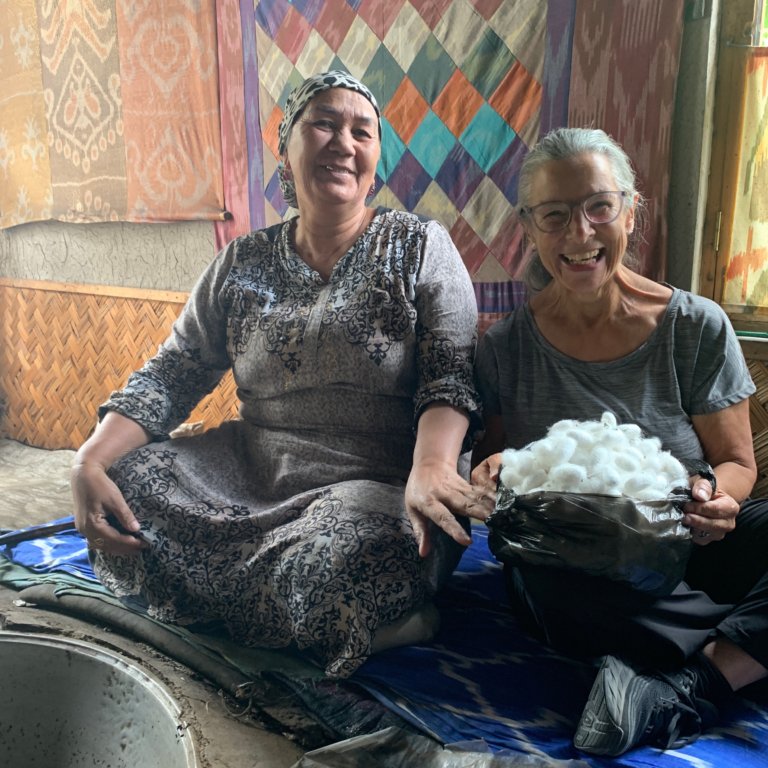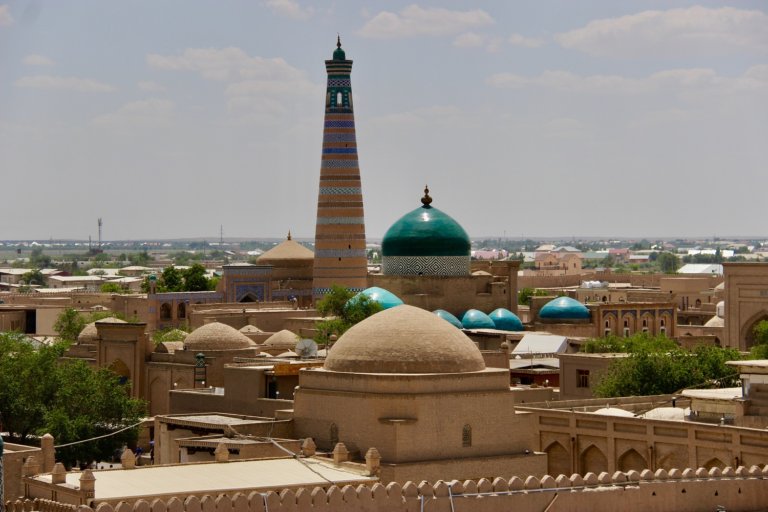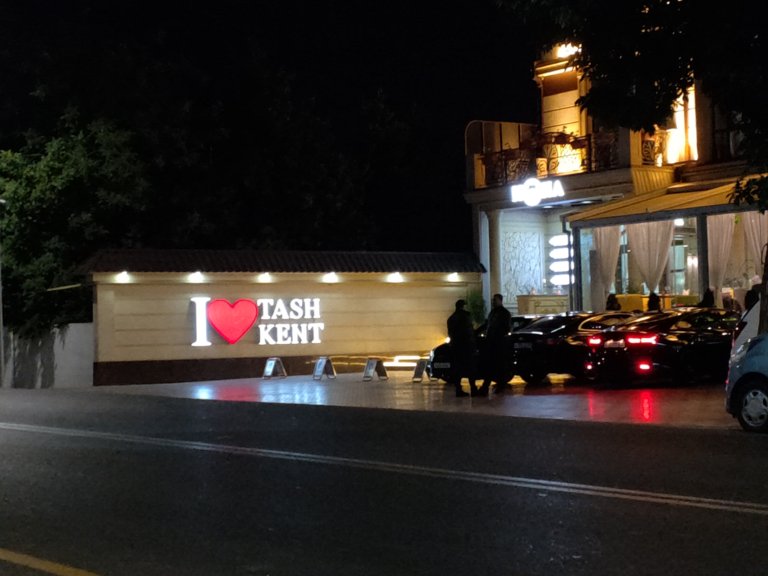Bukhara City. Uzbekistan Day 37 June 5th 2019
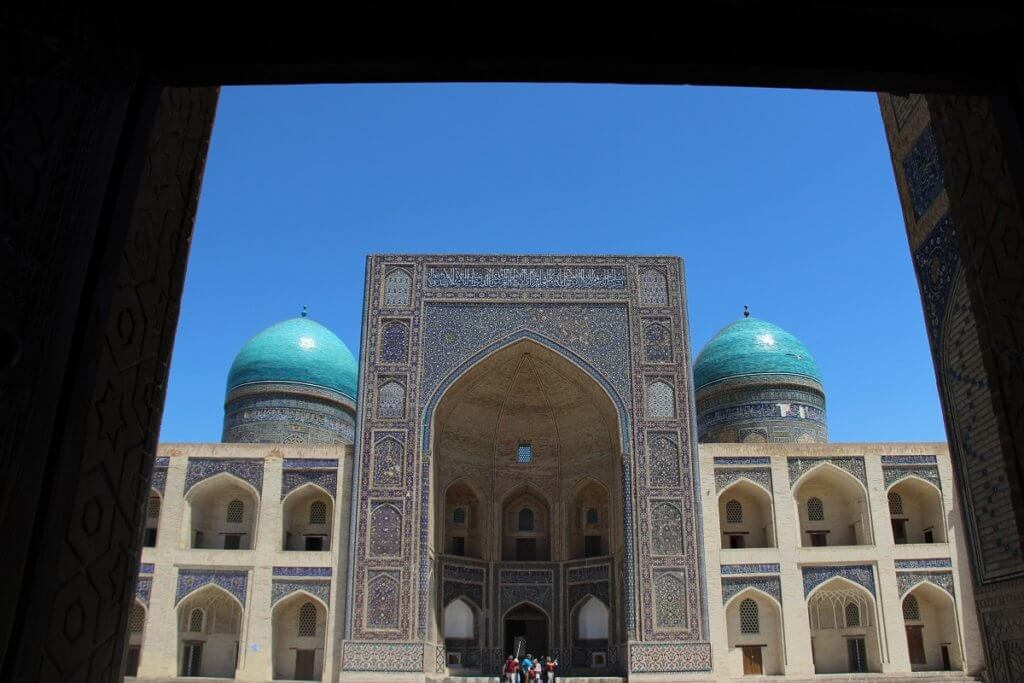
With the temperature rising to 39c, mudbrick buildings lining cobbled dusty streets, mosques, minarets and monuments to ancient times everywhere – it felt like walking history. Finally it really feels like the Silk Road of childhood stories and dreams.
As we continue to try to understand the history of Central Asia – today we have organised a guide hoping for a one day nutshell of history. It helped. Our local guide Dilya was a walking- talking font of knowledge. We eagerly followed her adding to our understanding of the changes of borders, the impacts of history on the people and the city. We travelled through the eras of invasion and conquerors. Through the impact of different empires passing through – including the Macedonian lead by Alexander the Great, the Turkish, Arab, Mongol Empires and Russian empires.
Easier to grasp is the basic stuff so we began with that– Bukhara city with a population of 300,000 is more aligned with ancient Persia. While Uzbek is the State language, Tajik is the first language – the native language for local people. This sounds a simple beginning but language is a complex thing in the region. The Tajik language having a Persian and different root to other Central Asian languages.
Our history lesson for the day was conveyed through a tour through the sights of Bukhara:
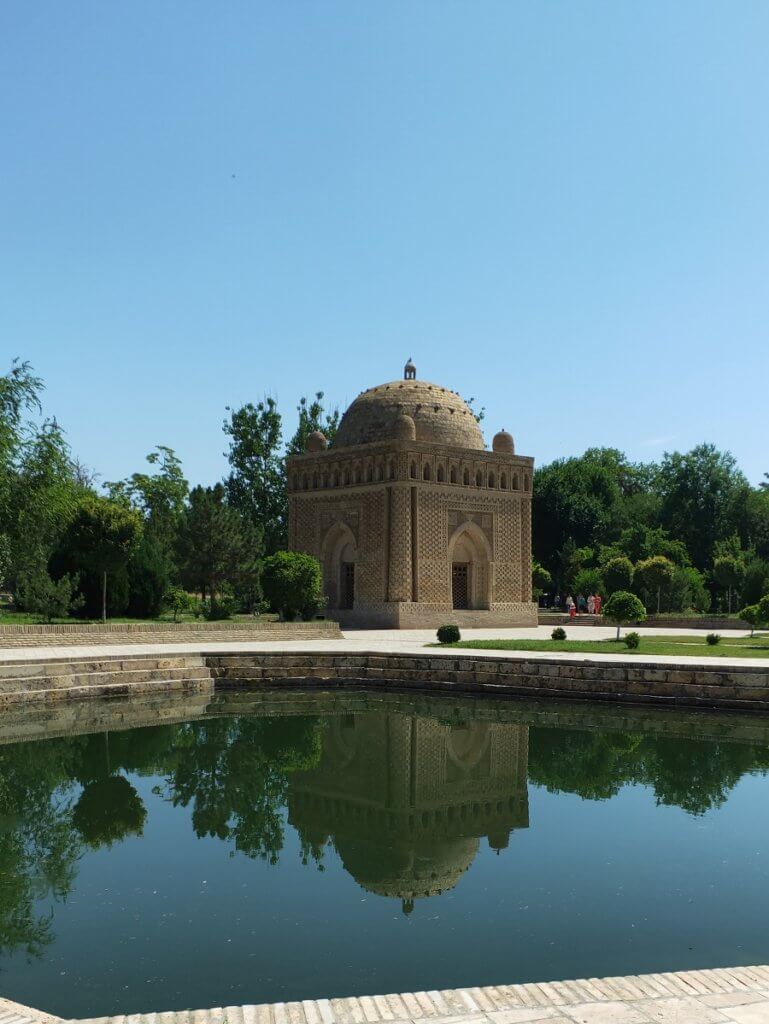
Ismail Samoni Mausoleum our first visit of the day was a WOW moment – a cube shaped mudbrick structure – a Samonid era geometric superstar. The Samonids Mausoleum was built in the 9 – 10th century as a Mausoleum for the ruler Ismail Samoni and his family. It remains to this day an architectural wonder.
The unusual features composition of fired bricks – not just sun dried. The composition of geometric shapes – apparently 19 geometric shapes. The overall shape of the building – cube shaped on the base – earthly and a dome shaped top – heaven. The decoration suggests multiple influences including Zoriastrian.

The structure is Pre-Islamic and is thought to have survived (intact) the destruction of the invasion by Ghengis Khan possibly because it was in the centre of a graveyard and he was reluctant to touch the burial ground.
Inside the tomb the pattern of the bricks is captivating – a line of long horizontally placed bricks – a buffer layer in case of earthquake. Already tested as the building remained in tact during the early severe earthquake. The dome is supported by arched structures on each of the four corners.

City Wall Nearby was a remaining piece of the city wall – originally 12kilometres in length with 11 gates, each named after the direction each gate faced – Samarkand, Khiva etc. Nowadays this section of the wall is the scenic background to a lake and recreation area.
Today being Eid celebrating the end of Ramadam, and a public holiday the park was filled with people enjoying themselves – people our in paddle boats adding to the picture perfect scene. The incongruity of the ancient earthen walls and the vividly coloured plastic Paddle-Os reminded you of the advance of time.
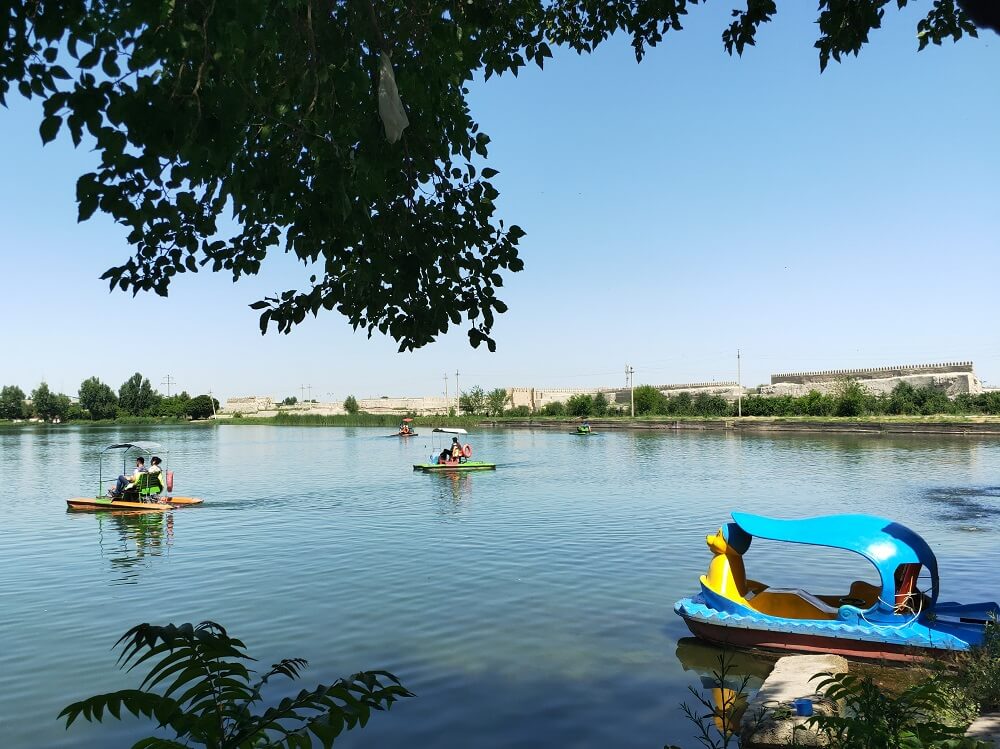
During the early days of silk road travel the wall gates were locked at sunset and anyone arriving afterwards camped outside until daylight. Animals were allowed in until goods were unloaded then they too stayed outside while their masters stayed within the city often in specially built Caravanserais.
The camel trains were capable of travelling a maximum of 40kms per day so at intervals a Sardoba (water storage) and a Caravanseri were established – often by wealthy leaders of businessmen in the area.
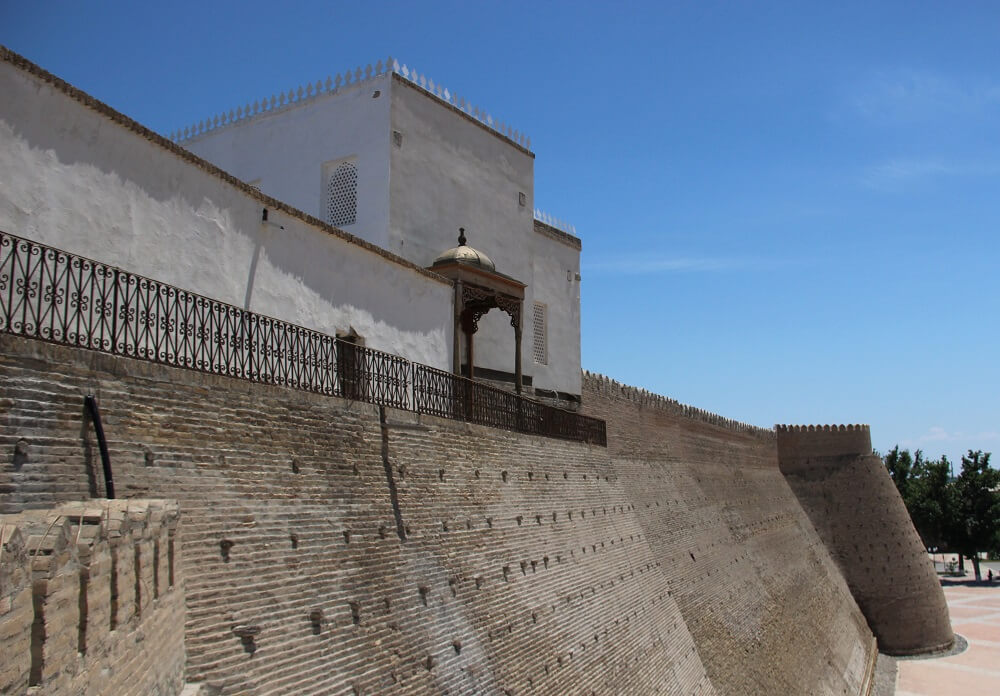
The Bolo Hauz Mosque was a stunning sight as you approached the entrance and a calm, cool space inside. The entrance is filled with thin wooden pillars each carved at the base and painted at the top with ornate ceiling decoration. Built in the early 18th centure, the mosque was the Friday mosque during early 20th century. Outside the mosque rows of red patterned carpet remained from the prayers following Eid. Both the interior spaces and area in front of the mosque is used.
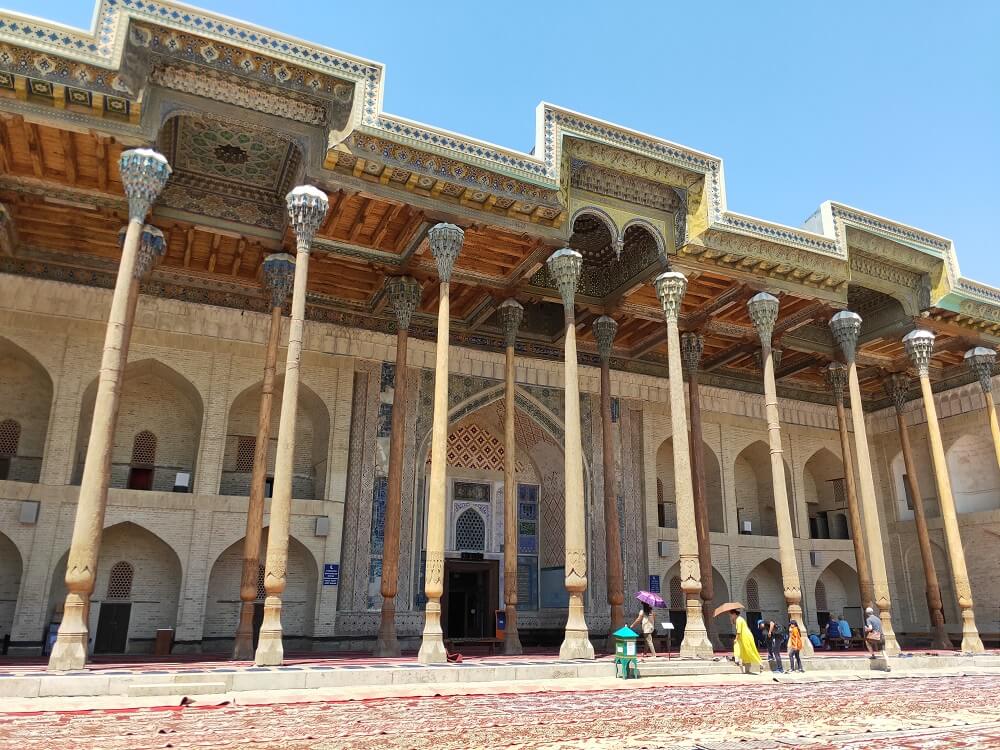
Minâra-i Kalân (Kalon Minaret) Another unique monument also spared by Genghis Khan. It is thought to have been spared because it was valuable for defense – a lookout over many miles of desert around. The Minori (Minaret) has foundations sunk to an exceptional 9 metres. The Minara also were the “lighthouses” of the time. A guide and landmark for the ‘ships of the desert’ – the camel trains.
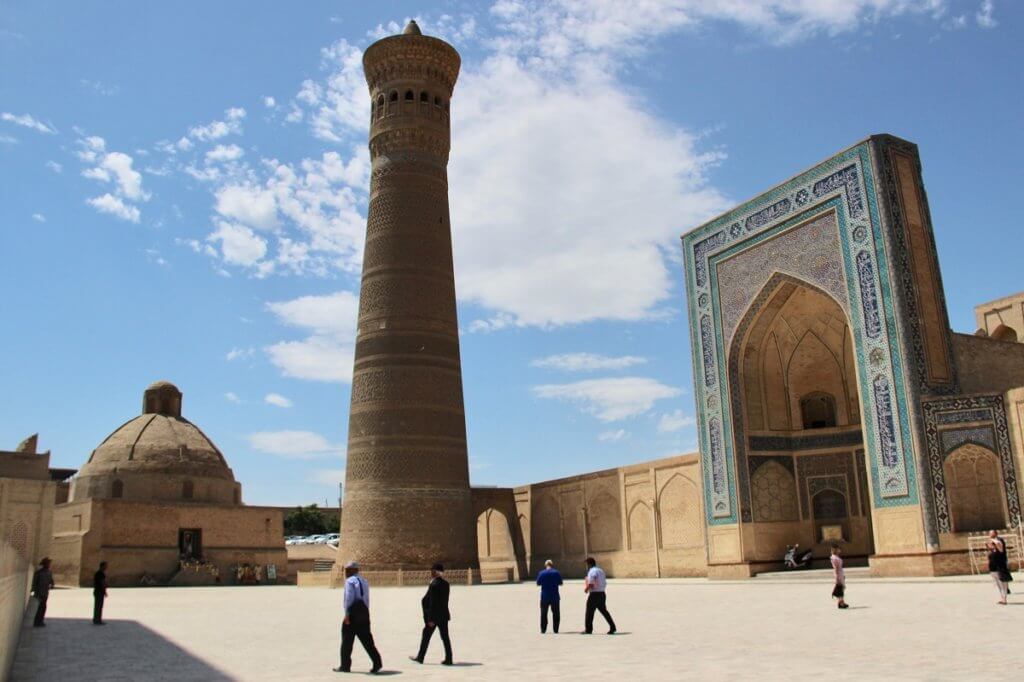
Poi-I-Kalyan (Kalon Mosque) Complex. This huge mosque is built on the site of the original, destroyed by Ghengis Khan in the 13 century. A small altar like construction in the centre is said to be a memorial to 700 woman and children massacred – have not been able to find research on this.

Visiting ancient complexes such as Poi-I-Kalyan (Kalon Mosque) Complex when the temperature is reaching 39c demonstrates the skill in the architecture that creates such cool pleasant interiors. The Kalon mosque has a lengthy series pillars and arches creating optical feasts and cool spaces. Also enabling a huge amount of people to attend prayers.

A small detail pointed out showed a large tile with a line through the middle. The tile had two different colour shades. Which was original and which was new? The dull colour was the newly made tile – 10 years ago and now faded. We do not know how the colours we made so clear, bright and fixed to last.

Mir I Arab Madrassah a 16th century Madrasa that remains in use today. It is said that Stalin allowed the school to continue during the Soviet era to enable him to be aware of and quell any uprising. Visitors now are only able to visit the front entrance the remainder is private for those studying. Students study a range of subjects including Islamic studies and on graduation are able to continue to higher education, begin as an Iman or teacher.
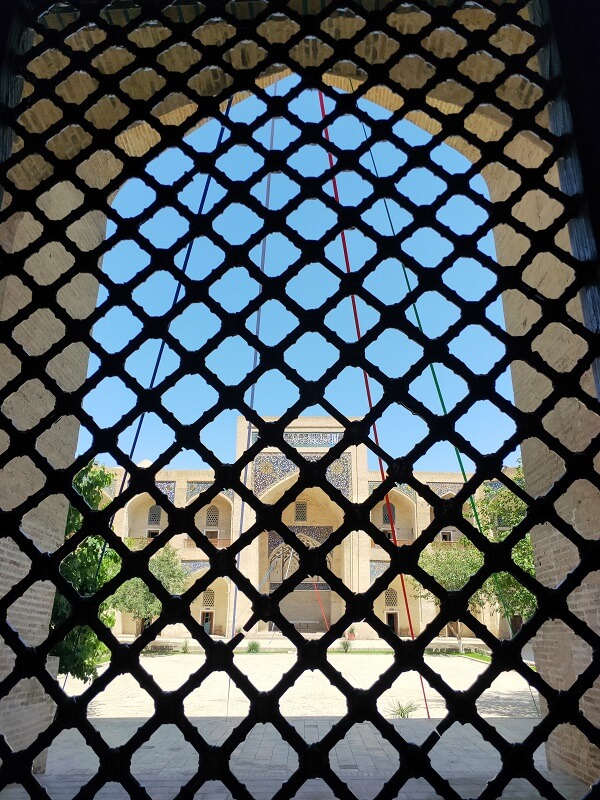
Magoki I Attari Mosque The final building protected from destruction is the 12th century Mosque built not long before the Mongolian troups invaded Bukhara. The stories vary as to how the building was protected – one story has that sandstorms covered the building and hid it from view. The other is that the locals covered the Mosque with sand to protect it.
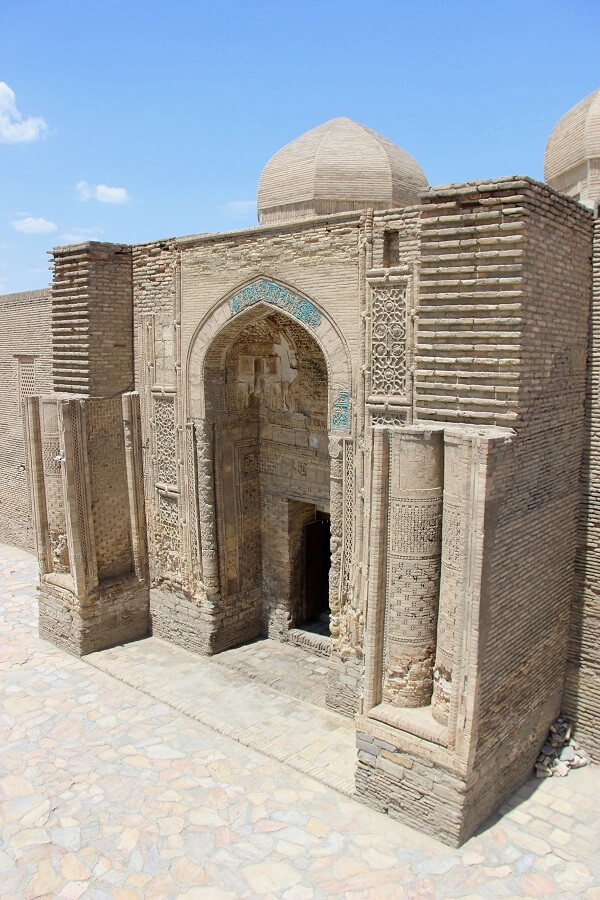
Evidence of multiple layers of city structures over time have been discovered showing a vertical city – one rebuilt on the same site. Water was a strong motivation for city development in the centre of the desert.
The Ark Citadel – an impressive reconstruction of the citadel surrounded by thick (reconstructed) walls protecting the original walls underneath and the fortress inside.
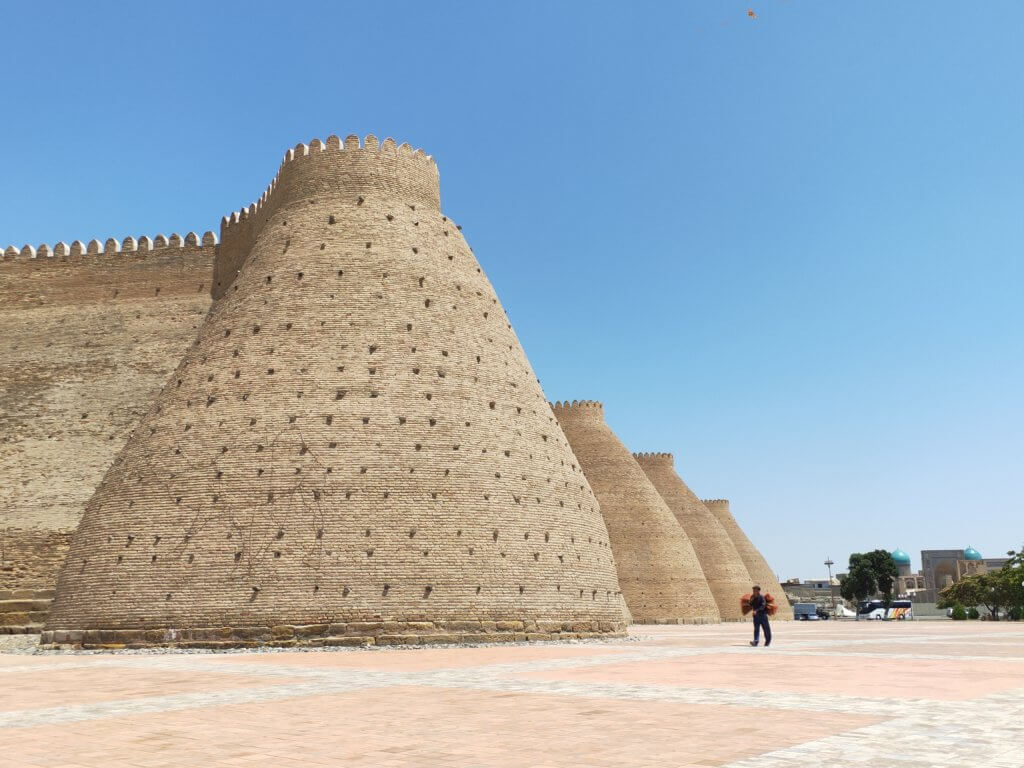
The first building on the site is thought to be 4th Century BC, the current structure dates from 5th century AD. This building was the domain of the Emir, his family and protectors. Apparently accommodating about 3,000 people.
The Ark Citadel was destroyed by the army of Genghis Khan and much later destroyed by a deliberate bombing campaign by the Red Army of Russia.
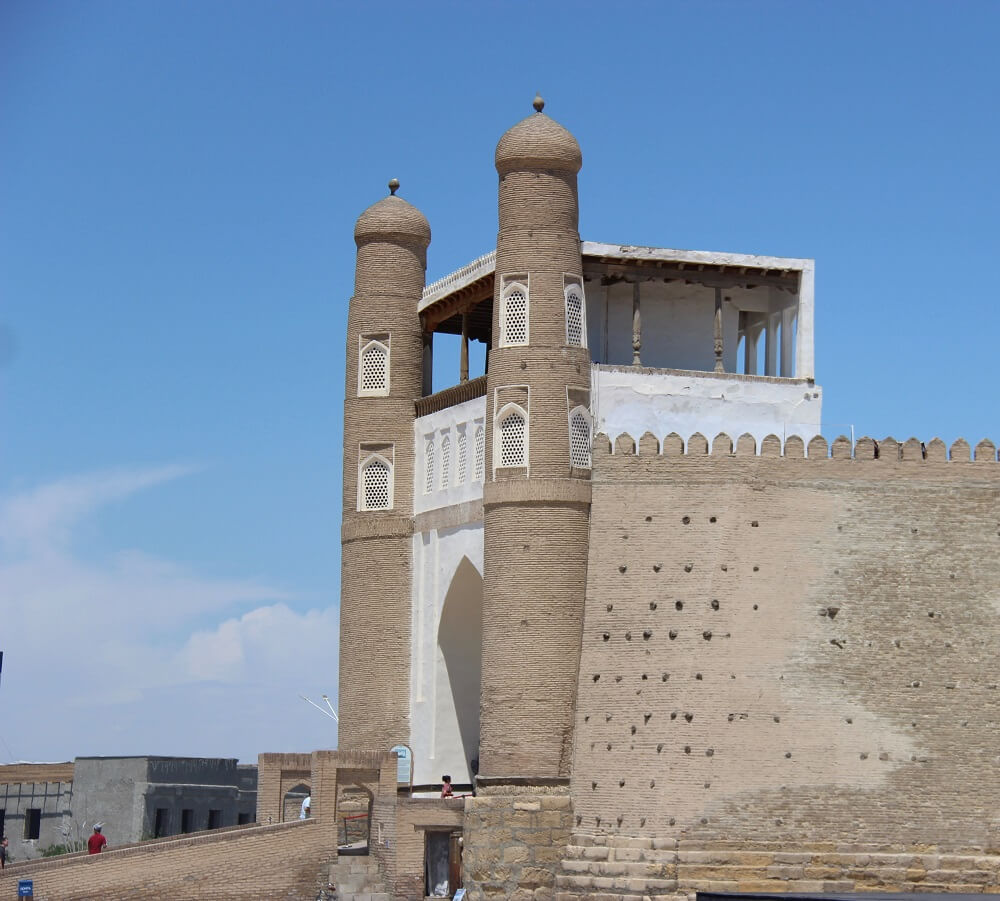
The Bazaars of Bukhara and Business Centres. During the 16th Century domed bazaars were built and named according to their function such as Toki Zargaron (the Cupola of Jewelers), Toki Telpakfurushon (the cupola of Cap – Makers), Toki – Sarrofon (the Cupola of Money – Changers).
Again the bazaars are designed for the climate, the cool interiors enticing you in. The many- domed rooves providing cool and pleasant spaces.

Chasma Ayaub Mausoleum. This Mausoleum has significance both in Islam and the Bible – Job (Ayub) was searching for water – he struck the ground with his staff and a well was built.

The well continues to supply people with water today. It now also has a Museum of Water that includes the distressing depletion and drying up of the Aral Sea.
